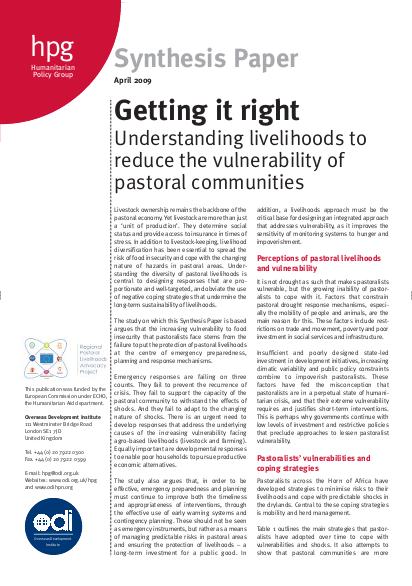
Livestock ownership remains the backbone of the
pastoral economy. Yet livestock are more than just
a ‘unit of production’. They determine social
status and provide access to insurance in times of
stress. In addition to livestock-keeping, livelihood
diversification has been essential to spread the
risk of food insecurity and cope with the changing
nature of hazards in pastoral areas. Understanding
the diversity of pastoral livelihoods is
central to designing responses that are proportionate
and well-targeted, and obviate the use
of negative coping strategies that undermine the
long-term sustainability of livelihoods.
The study on which this Synthesis Paper is based
argues that the increasing vulnerability to food
insecurity that pastoralists face stems from the
failure to put the protection of pastoral livelihoods
at the centre of emergency preparedness,
planning and response mechanisms.